Special Report
Cruise Ships vs. the Environment: Their 10 Costliest Offenses
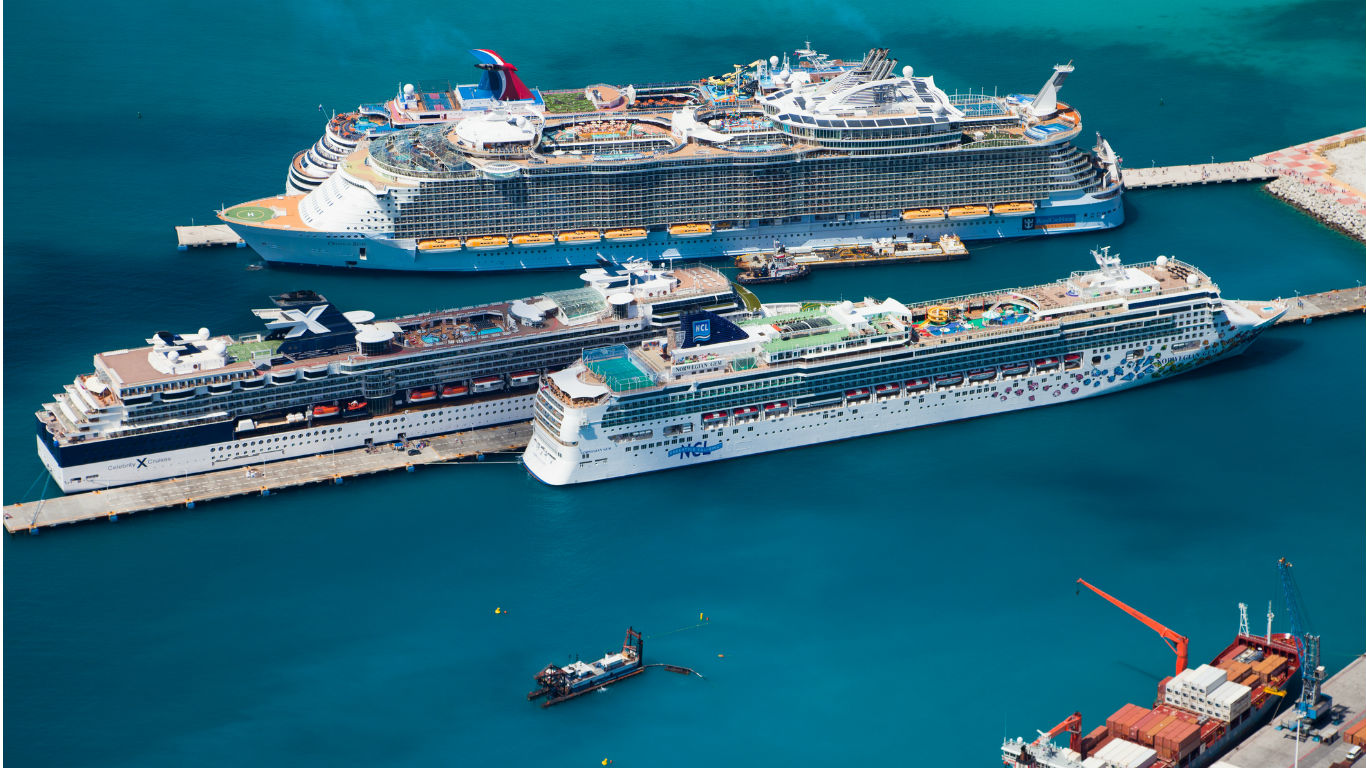
Published:
Last Updated:

Ah, cruising the seven seas — exotic ports, beautiful sunsets, bracing sea air, endless buffets, celebrity chefs, world-class bars, casinos, live music, sparkling swimming pools, and much, much more, all a million miles (or so it sometimes seems) from dry land… Sounds like paradise, right, whether you’re sailing on a charming small boutique vessel or one of the biggest cruise ships in the world?
But then there’s the dark side: the food poisoning, the stomach-churning storms, the collisions and the running aground, the people falling overboard. The website Cruisejunkie, which bills itself as “Your resource for the other information about the cruise industry,” publishes lists of ships that have sunk or run aground, illness outbreaks at sea, instances of passengers or crew members going over the side.
They have also just published an updated list of pollution and environmental violations and fines, based on those reported in the media or in public documents. 24/7 Tempo has scoured the list to find the 10 most egregious examples of such violations over the past two decades-plus, and ranked them according to the amounts of the fines levied against the cruise operators. Dates given are when the penalties were assessed, not necessarily when the incidents occurred.
Just two companies were to blame for most of these violations, with the most common offense being the illegal discharge of oil-contaminated waste. The fact that these cruise lines were caught and fined doesn’t necessarily make them bad companies, though; human error and faulty equipment or processing systems might have been to blame in some cases.
Cruising can still be a wonderful way to relax and see a lot of the world. For all their potential problems, there’s a good case to be made for the fact that cruises are a wonderful way to spend your hard-earned vacation. There are common elements that will make it a better experience than other types of leisure travel — these are the 15 cruises that are better than other vacations.
Click here to learn more about cruise ships vs. the environment: their 10 costliest offenses.
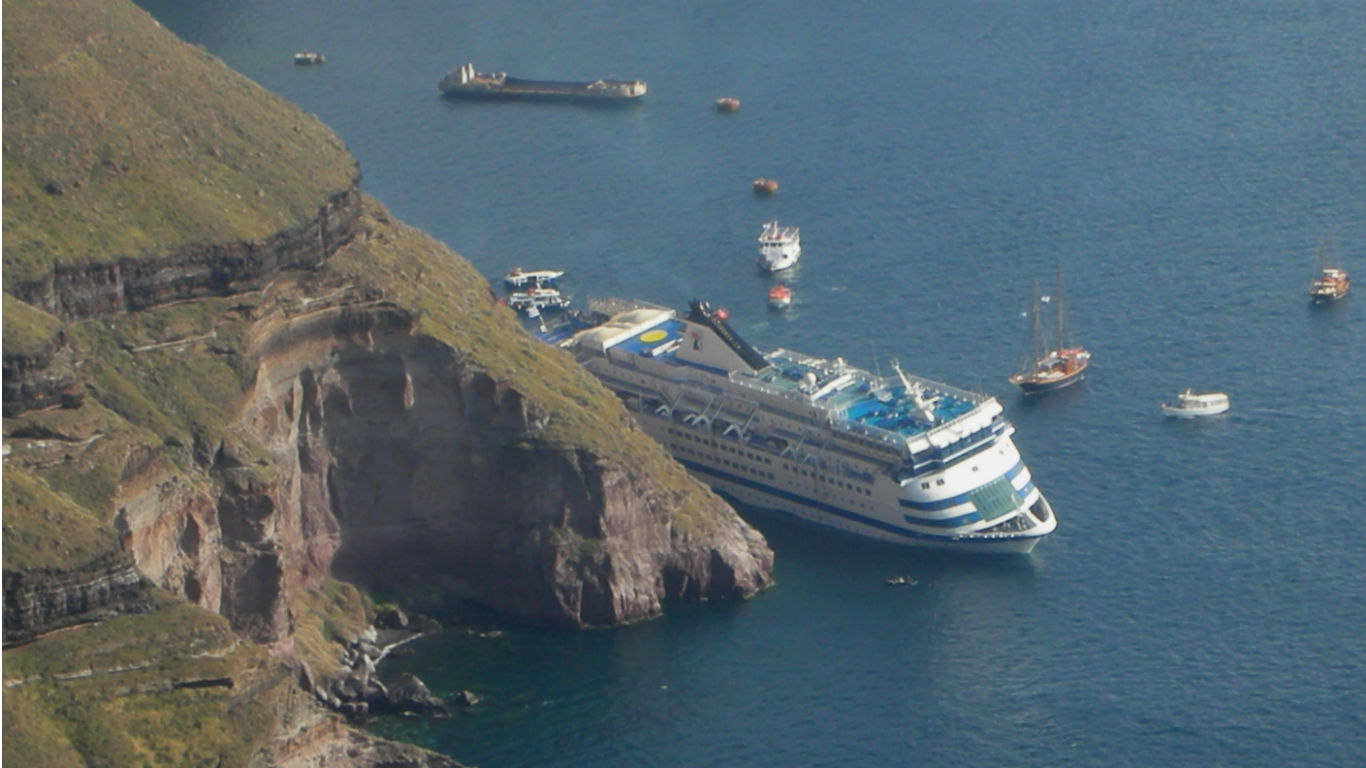
Cruise line: Louis Hellenic Cruises
> When: June 2007
> Penalty: $1.57 million
> Offense: Oil and fuel spill
This fine was assessed against Louis Cruises after its ship the Sea Diamond ran aground off the coast of the Greek island of Santorini. Two of the vessel’s almost 1,200 passengers were missing after the accident and presumed dead. The ship was towed offshore and sank, leaking at least 300 tons of fuel and lubricants into the sea. Louis contested the fine. Nine crew members were subsequently convicted of various offenses relating to the accident by a Greek court.
[in-text-ad]
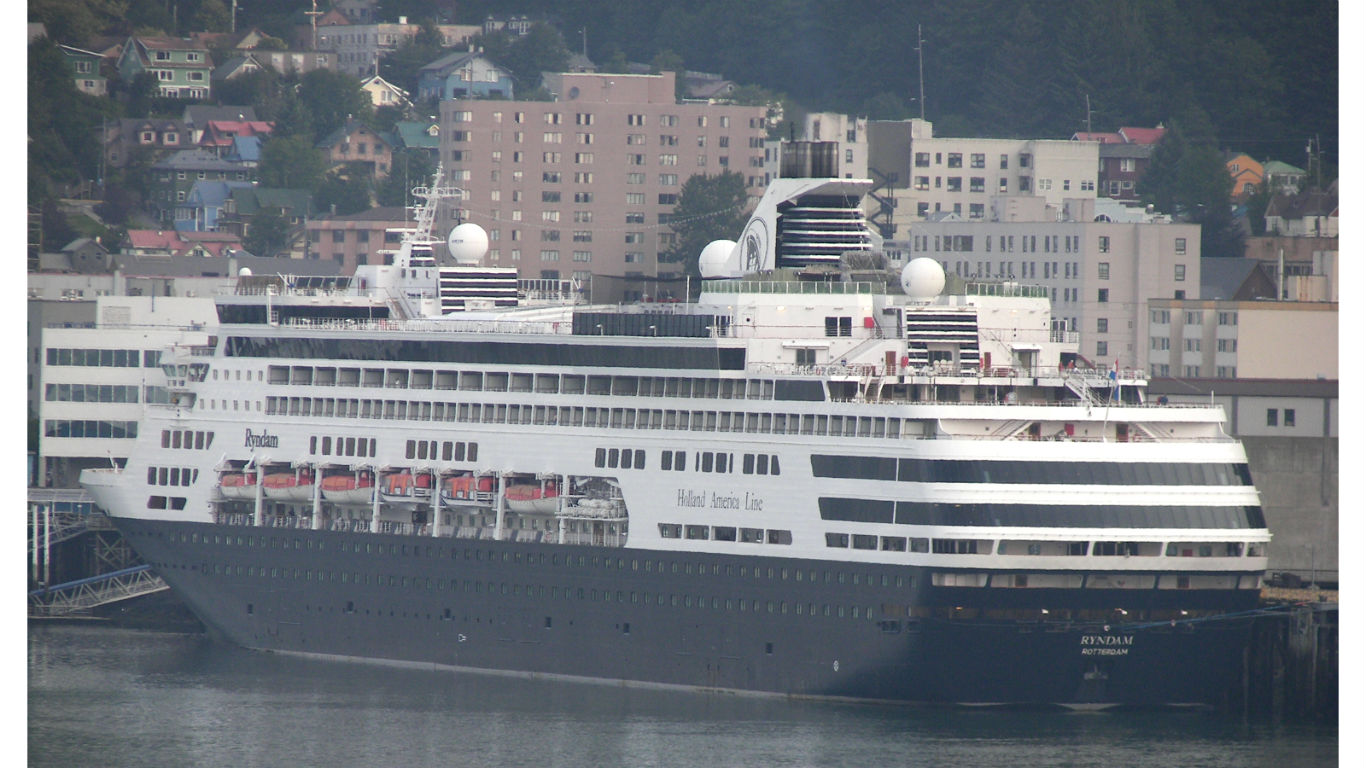
Cruise line: Holland America
> When: August 2002
> Penalty: $2 million
> Offense: Sewage discharge
Holland America’s ship the Ryndam poured a disputed amount of untreated or partially treated sewage into the harbor of Juneau, Alaska; the Coast Guard initially estimated about 40,000 gallons; the cruise line said 250 gallons; and the eventual plea deal settled on 20,000 gallons. The cruise line blamed human error for the incident, and its vice president of compliance programs was quoted as saying that, in any case, the ship’s wastewater treatment facilities produce water that is “as pure, if not purer, than drinking water.”
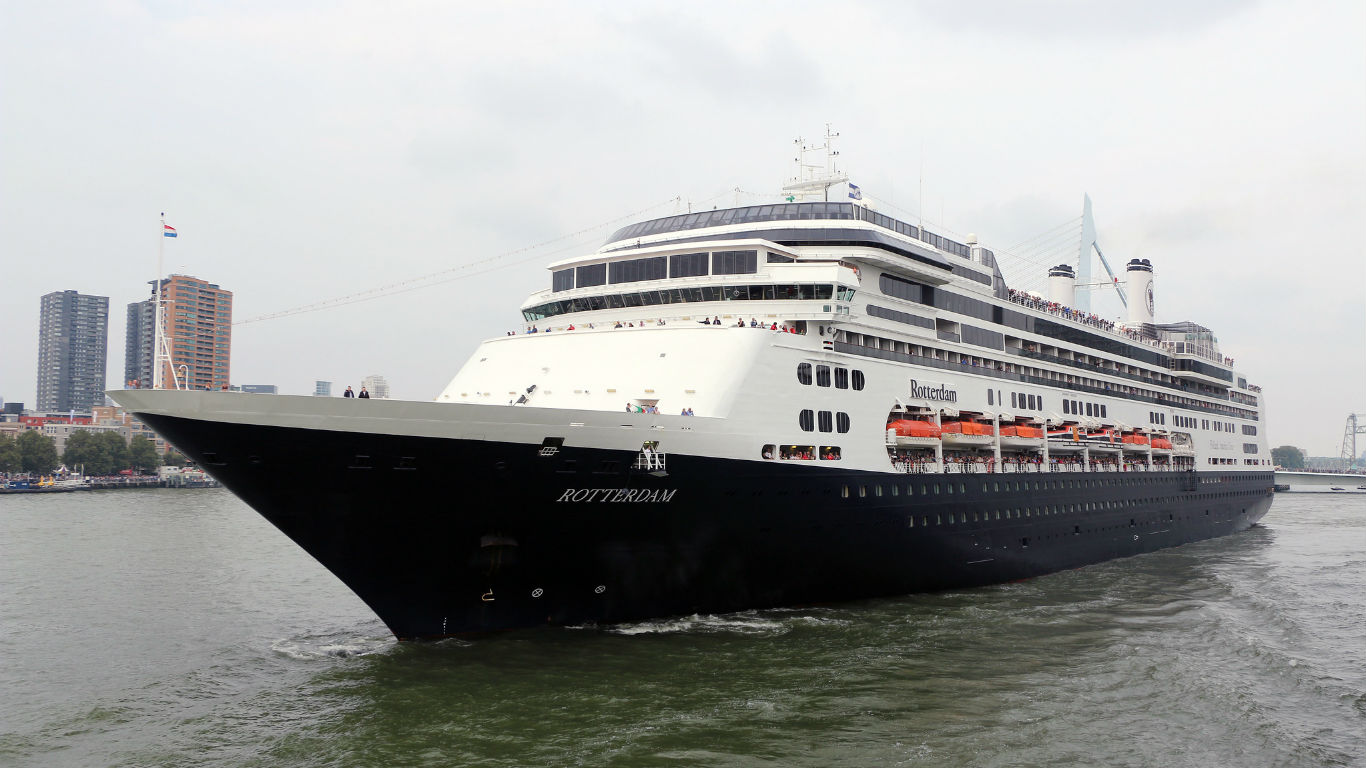
Cruise line: Holland America
> When: June 1998
> Penalty: $2 million
> Offense: Oil discharges
Holland America was required to pay a $1 million fine and $1 million in restitution after one of its ships, the Rotterdam, discharged oil-contaminated waste into Alaskan waters 13 times in a ten-day period in 1994. Investigators found that the vessel had a permanent pipe arrangement specifically for the purpose of illegal discharging.
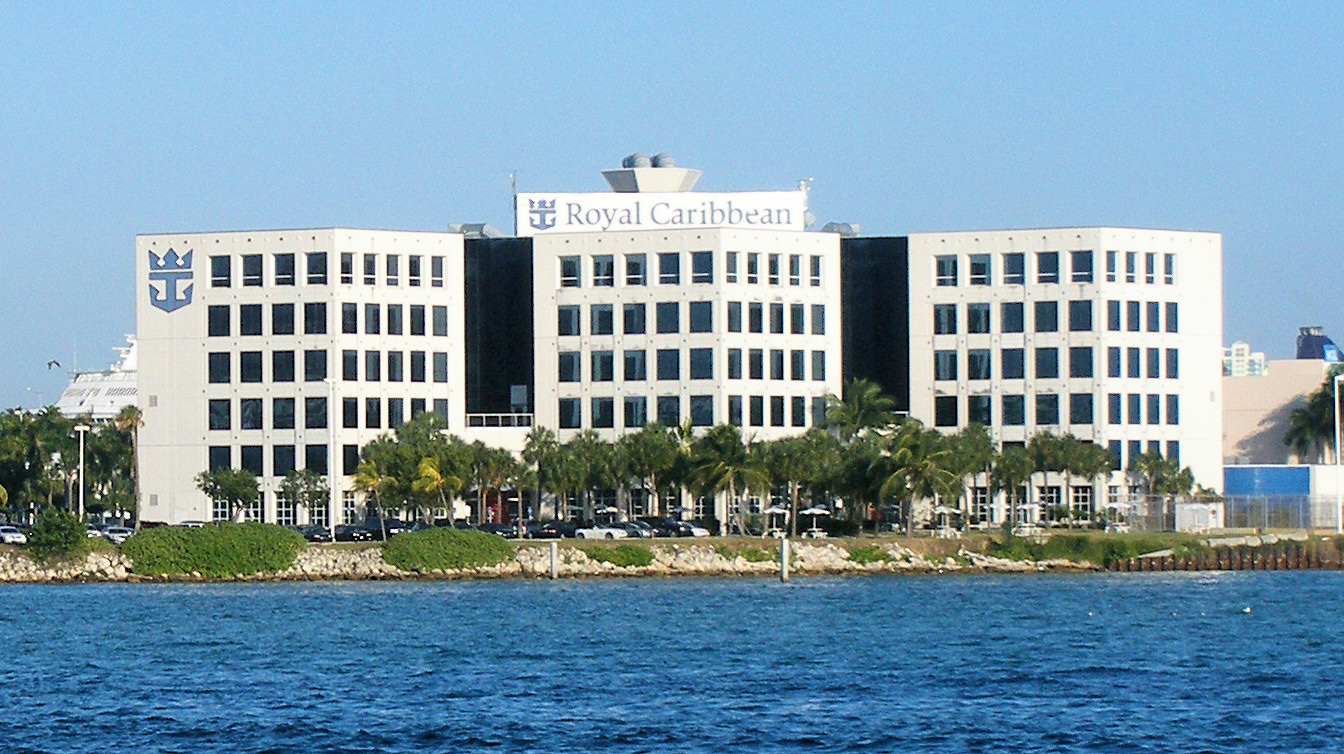
7. Cruise line: Royal Caribbean Cruises
> When: January 2000
> Penalty: $3.5 million
> Offense: Oil and toxic chemical discharges
In 1999, Alaska accused Royal Caribbean of seven counts of violating the state’s laws regarding hazardous waste and oil disposal. The company admitted discharging dry-cleaning fluid and other toxic chemicals, as well as oil-contaminated water into Alaskan seas.
[in-text-ad-2]
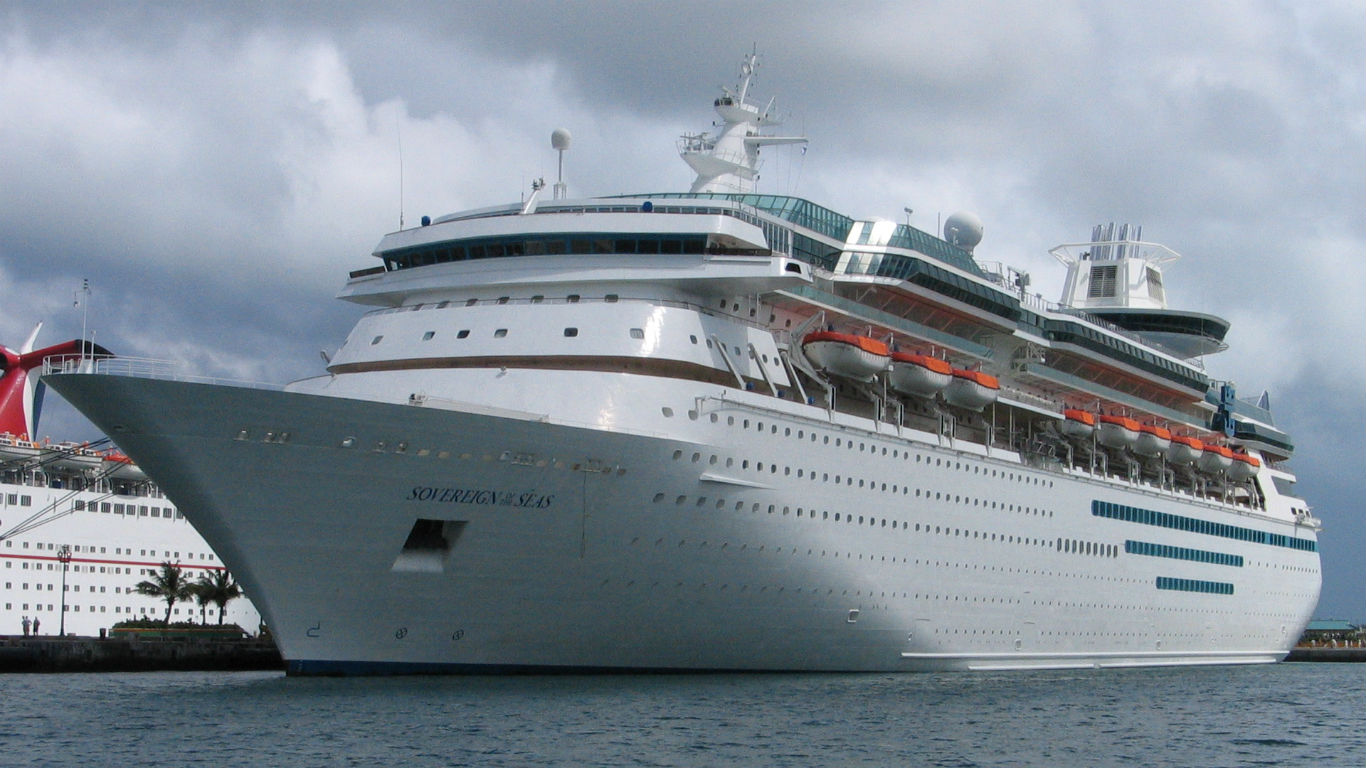
6. Cruise line: Royal Caribbean Cruises
> When: June 1998
> Penalty: $8 million
> Offense: Oil discharges
One Royal Caribbean vessel, Sovereign of the Seas, was discovered pouring oily waste outside San Juan Harbor in Puerto Rico in the fall of 1994. In investigating the incident, authorities found that the ship regularly poured such waste overboard instead of processing it first, and that employees of that and four other Royal Caribbean ships regularly falsified record books and made false statements to the Coast Guard about their discharge practices. The National Fish and Wildlife Foundation received $1 million of the fine amount.
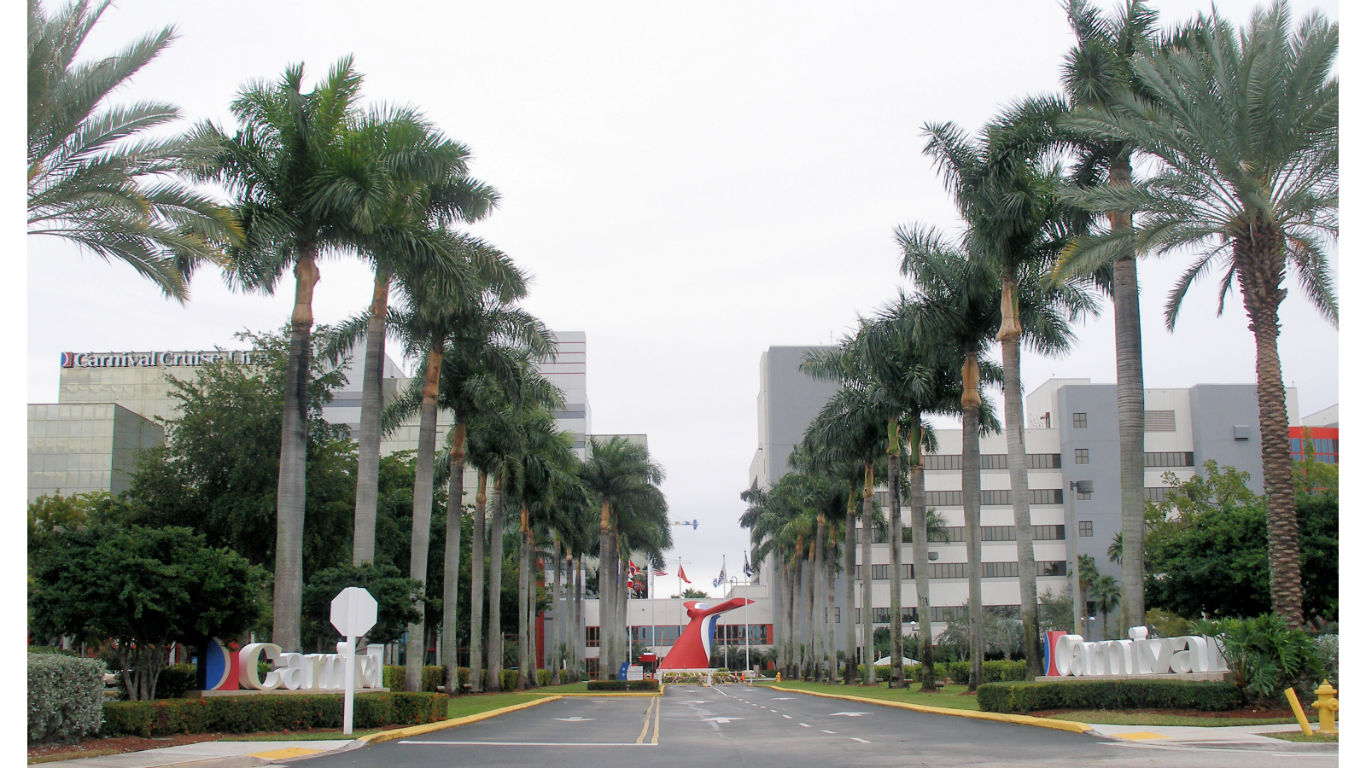
5. Cruise line: Carnival Cruise Line
> When: April 2002
> Penalty: $18 million
> Offense: Oil discharges
Carnival admitted that improper use of pollution prevention equipment on six of its ships resulted in numerous instances of oil-contaminated waste being emptied into the ocean from 1996 through 2001. The cruise line also pled guilty to falsifying records to hide the practice. The penalty was divided into a $9 million fine and $9 million in court-ordered community service to fund environmental projects in South Florida, the region most affected by the dumping.
[in-text-ad]
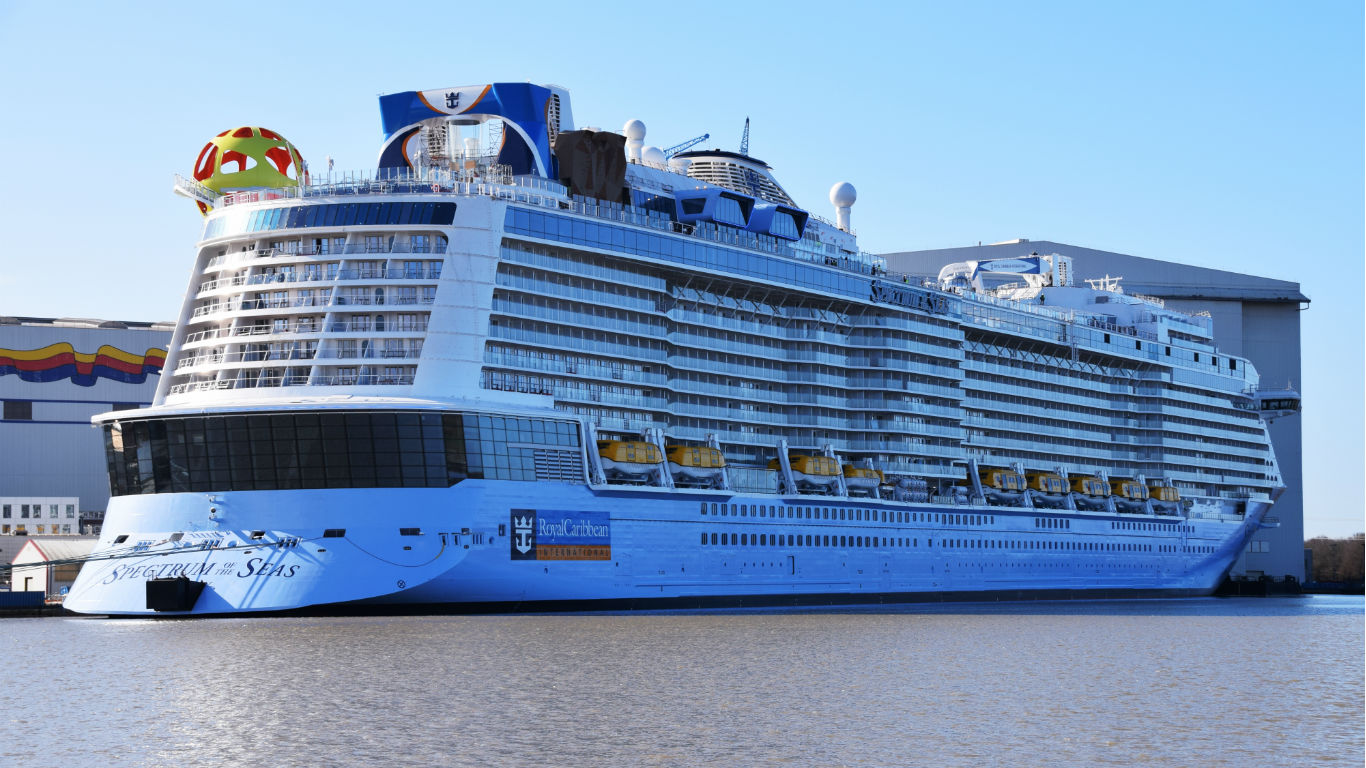
4. Cruise line: Royal Caribbean Cruises
> When: July 1999
> Penalty: $18 million
> Offense: Oil discharges
Nine Royal Caribbean vessels were accused, and pled guilty, of discharging oil-contaminated waste and polluted waste water into the ocean and making false statements to the U.S. Coast Guard. The practices occurred through 1995 and in one case in 1998 and extended across six jurisdictions — Miami, New York City, Los Angeles, Anchorage, Puerto Rico, and the U.S. Virgin Islands. Violations included repeated oil discharges in Alaska’s Inside Passage. Each jurisdiction received a specified amount of the settlement, ranging from $1 million for Puerto Rico to $6.5 million for Anchorage. Some $3.5 million of the total was earmarked for the National Fish and Wildlife Foundation, with another $2.5 million going to the National Park Foundation.
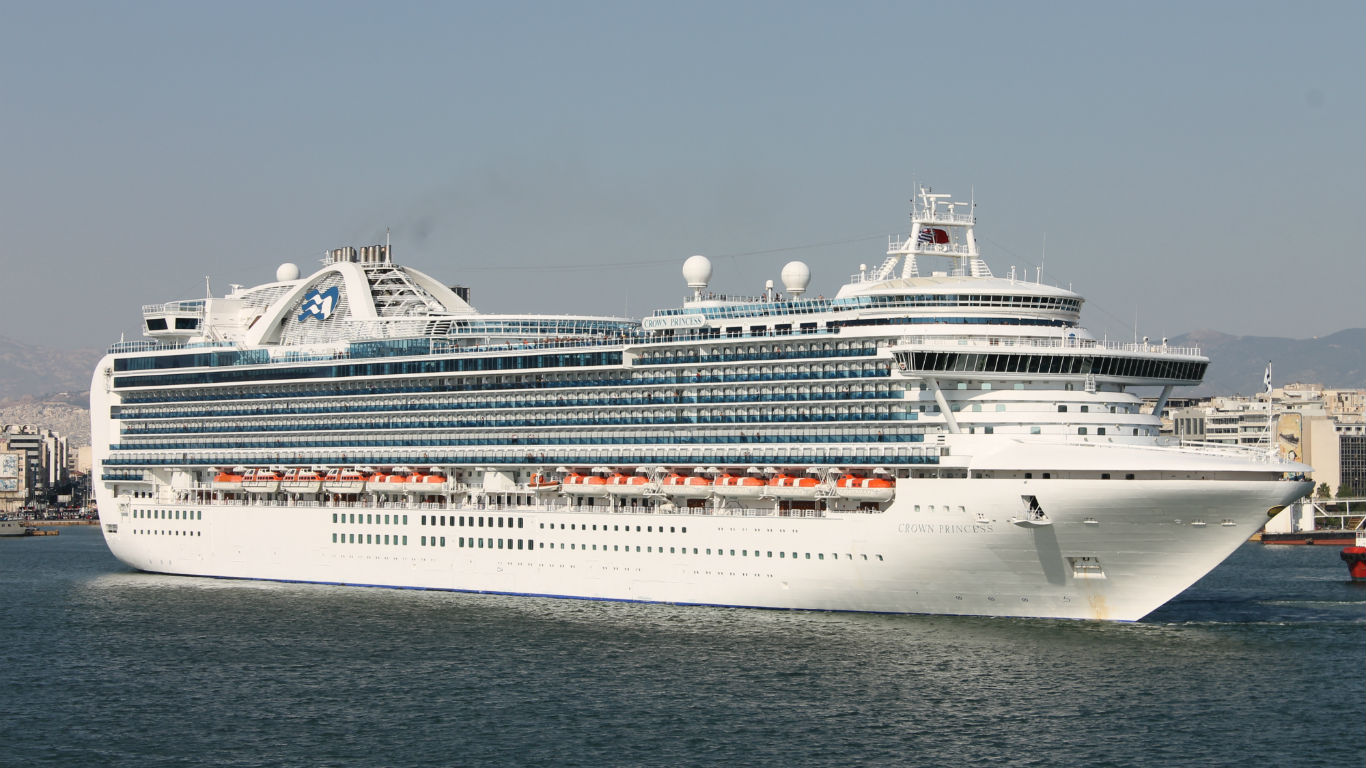
3. Cruise line: Carnival Corporation
> When: June 2019
> Penalty: $20 million
> Offense: Violations of probation for previous offenses
When Carnival’s Princess line was fined $40 million in late 2016 for illegal dumping followed by attempts at a coverup (see No. 1), one of the terms of the settlement was a five-year monitoring period for environmental compliance applied to all the corporation’s cruise lines — including Holland America, Seabourn, and Cunard, among others. Last month, the company was found guilty of some 800 violations of their probation, including dumping of plastics. This additional penalty was assessed as a punishment.
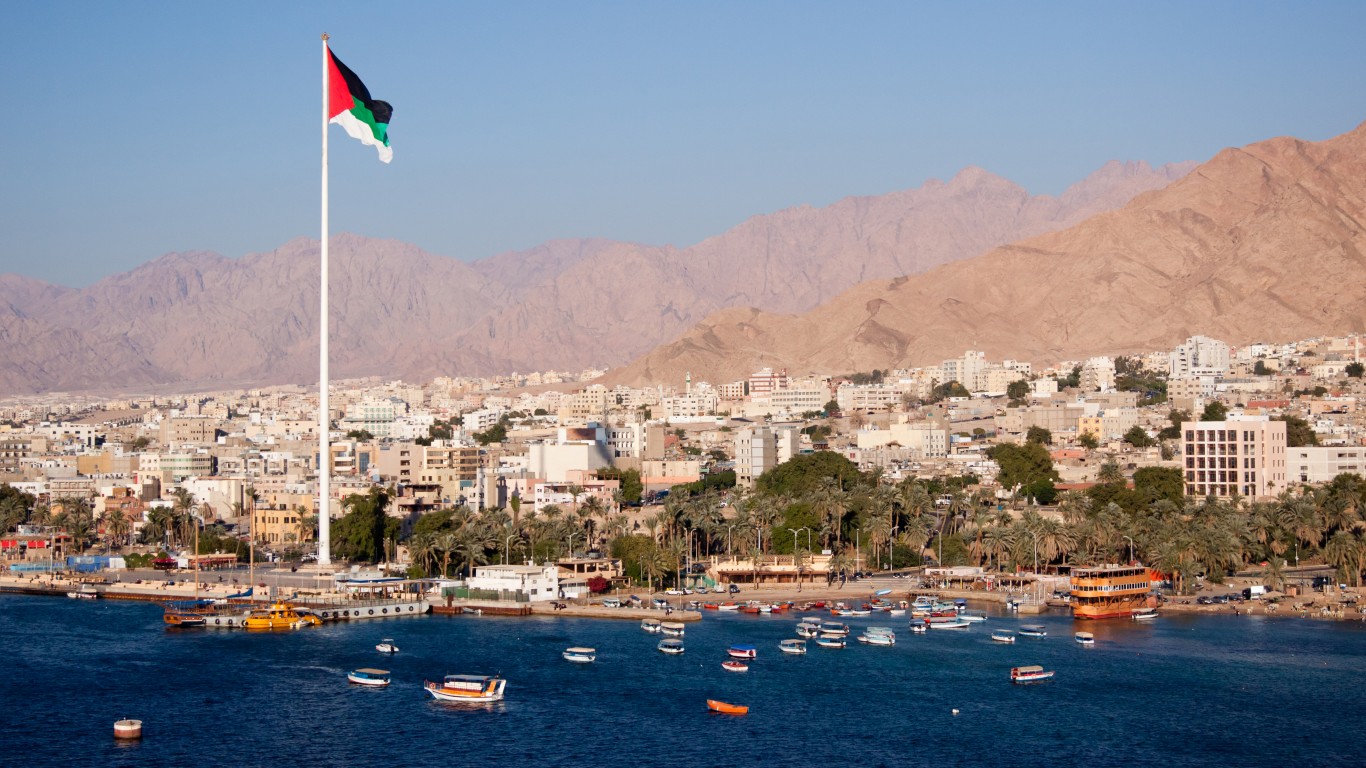
2. Cruise line: Cunard Line
> When: April 1996
> Penalty: $23.5 million
> Offense: Damage to reef
Cunard’s Royal Viking Sun ran aground on a coral reef at the mouth of the Gulf of Aqaba, which extends between Egypt and Saudi Arabia, and began leaking. All passengers were safely evacuated, but the reef was damaged and Egyptian authorities temporarily seized the vessel.
[in-text-ad-2]
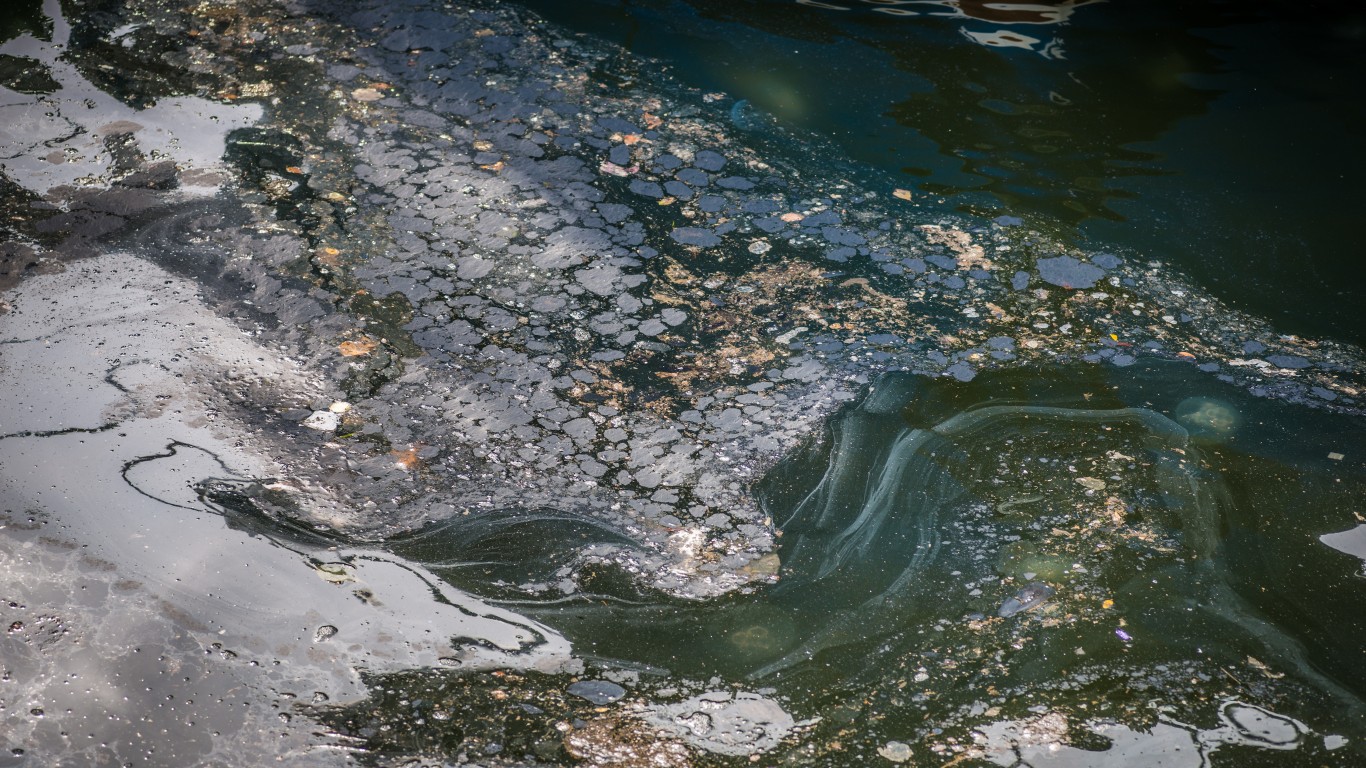
1. Cruise line: Princess Cruises
> When: December 2016
> Penalty: $40 million
> Offense: Various
Princess admitted to seven felony charges of pollution, including dumping 4,227 gallons of oil-contaminated waste off the British coast in 2013, and subsequently falsifying logs to cover up the dumping. Eight Carnival Corporation subsidiaries, including Princess, are being audited for a five-year period by a court-supervised Environmental Compliance Program.
Retirement can be daunting, but it doesn’t need to be.
Imagine having an expert in your corner to help you with your financial goals. Someone to help you determine if you’re ahead, behind, or right on track. With SmartAsset, that’s not just a dream—it’s reality. This free tool connects you with pre-screened financial advisors who work in your best interests. It’s quick, it’s easy, so take the leap today and start planning smarter!
Don’t waste another minute; get started right here and help your retirement dreams become a retirement reality.
Thank you for reading! Have some feedback for us?
Contact the 24/7 Wall St. editorial team.